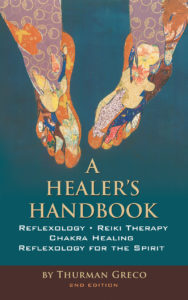Tara Sanders: Healing, Yoga, and Reflexology
As reflexologists, we add new clients to our practice often. Healing, yoga, and reflexology are important here. Depending on your personality, or your practice, you may ask a few or many questions from them on the intake forms and in the initial interviews.
Trauma is one area of a person’s life which we rarely approach. It is just too hidden, too destructive.
This is wise. Trauma is a subject which our client partners need to bring up when the time is right for them to share. Because nothing is said doesn’t mean that it didn’t happen. It just means that the person isn’t comfortable discussing it.
Because, in reality, 1 woman in 4 has experienced domestic violence and/or sexual assault. Personally, I question the 1-in-4 statistic. No woman reports domestic violence or sexual assault if she can possibly avoid it. Reporting is simply too painful.
When I first spoke with Tara Sanders, a Woodstock based yoga instructor and program director in the nonprofit Exhale to Inhale I was suddenly very alert. I realized that we, as reflexologists, need to be more sensitive to the secrets and hidden traumas of our client partners.
Exhale to Inhale yoga works to empower survivors of domestic violence and sexual assault to heal through yoga. Exhale to Inhale yoga guides women through postures, breathing, meditation. Taught in trauma sensitive style, practitioners are enabled to ground themselves in
their bodies
their strength
their stillness.
As this happens, the women connect to themselves. They work toward empowerment and worthiness. This practice can be transformative for survivors of sexual abuse and domestic violence when they shed the cloak of victimhood.
Healers, reflexologists, and body workers have long known that when a person is traumatized, the event is stored in the muscles.
We also know that reflexology sessions are given a boost when combined with other modalities such as yoga, meditation, breathing, Reiki therapy, and massage.
Tara teaches the classes without music. She does not touch the students to correct a posture. Lights remain on throughout the class. These sessions offer survivors an opportunity to reclaim their lives through the healing and grounding of yoga.
Tara uses the yoga classes to help her students feel safe, strong, in the present moment. As she teaches, she is a conduit for healing and healthful programs in our community. Reflexology for the Spirit practitioners are also conduits for healing as we work the reflex points to encourage homeostasis.
Exhale to Inhale is a New York-based nonprofit offering free weekly yoga classes to survivors of domestic and sexual assault. After June 20, Exhale to Inhale yoga classes will be taught free of charge to women in area shelters in Upstate New York.
Not everyone has a Tara Sanders available in the community. However, it’s possible to suggest reflexology sessions offered in tandem with yoga, meditation, breathing classes. Whether or not you are aware of your client partner’s experience with trauma or domestic violence is not important. What is important is that you invite your client partner to experience this boost to your modality. Think of healing, yoga, and reflexology as a package.
Hopefully one day soon, there will be more Tara Sanders yoga teachers in communities everywhere.
Thank you for reading this blog/book.
Please refer this article to your preferred social media network.
Don’t forget to join the email list.
Jennette Nearhood provided the media.
Thurman Greco
4 Things You Can Do To Breathe Properly
While it’s true that we don’t come into embodiment with a book of instructions, I wish we did at least show up knowing how to breathe.
Many of us breathe much too shallowly which keeps the body tight. Relaxation is difficult and body functions have a tendency to be stagnant. This makes all the little mundane things we do everyday much harder.
In the ideal situation, a person breathes slowly, deeply, consciously.
When you breathe slowly,
your mind relaxes,
your body purifies,
your energy level increases,
you maintain a sense of well-being.
When you breathe properly, you exercise your intuitive skills. Many people mistakenly believe they are not intuitive when, in fact, they are. The problem is they are breathing so shallowly that their body is too uptight to know when the intuitive sense is working.
If you feel you aren’t breathing properly, take yoga classes. Find a yoga teacher who will admit that s/he can teach proper breathing techniques.
OR
Take some breathing classes from a breath instructor if you can. That’ll only make you a better reflexology practitioner or client-partner.
OR
Singing classes may be an option for you as well.
OR
Set aside 2-3 minutes a day in which you simply breathe mindfully. To do this, begin by sitting comfortable in a quiet, safe place.
Focus on your breathing. It may help to close your eyes here for a couple of minutes.
Find a place on your body where you can actually feel yourself breathing. That may be your nose, your abdomen or your diaphragm.
Now – just pay attention to your own breathing and nothing else. Notice the quality of each breath, how your body moves, how it feels to breathe.
As you do this, you should begin to feel some burdens lifting and some stress melting.
Try doing this exercise daily for several weeks. This may be something you find yourself doing daily over a long period of time. Or, this may be something that eventually becomes a meditative exercise for you.
In the meantime, try to spend a few minutes each day consciously breathing in through your nose and out through your mouth. As you do this, be aware of your abdominal muscles contracting as you inhale. As you exhale through your mouth, feel your abdomen softening, expanding.
Some behaviors indicate poor breathing habits:
yawning a lot during the day
taking a lot of deep breaths,
holding your breath mid-conversation,
poor posture
When this happens, you may not be getting enough carbon dioxide in your blood or not enough oxygen to your brain.
Notice your own breathing each day and observe how your client-partners breathe. Encourage better breathing habits for both you and your client-partners.
Guideline: Breathe slowly, deeply, consciously.
Thank you for reading this blog/book. I hope you will enjoy this next series of posts which make up the wellness part of the textbook.
Please refer this article to your preferred social media network.
Peace and food for all.
Thurman Greco








